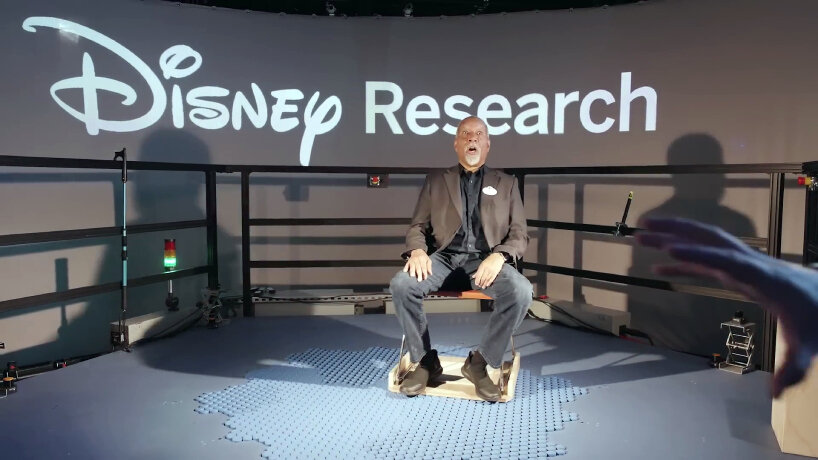
Beyond the Playroom: Is VR Graduating From a “Toy” to a True Reality?
For the better part of a decade, Virtual Reality (VR) has occupied a curious space in the consumer tech landscape. Propelled into the mainstream by accessible, all-in-one headsets, VR has become a staple in living rooms worldwide, largely seen as the next evolution of the video game console—a sophisticated, immersive toy. The latest VR Toy News often focuses on new games, social apps, and incremental hardware updates. However, a seismic shift is occurring beneath the surface of this playful perception. A new class of VR systems is emerging, challenging the very definition of VR as a mere headset-based experience.
These next-generation platforms aim to move beyond the controller and the room-scale boundary, integrating full-body tracking, haptic feedback suits, and omnidirectional treadmills to create a level of immersion that was once the exclusive domain of science fiction. They propose an experience so complete that it blurs the line between the digital and the physical. This evolution raises a critical question: Are we witnessing the moment VR finally sheds its “toy” label and becomes a true, parallel reality? This article explores this technological leap, analyzing the components, implications, and future of a VR that is far more than just a game.
The Golden Age of the VR “Toy”: How Standalone Headsets Redefined Play
To understand where VR is going, we must first appreciate how it became a household name. The current era is dominated by the standalone headset, a device that democratized virtual reality by removing the two biggest barriers to entry: a powerful PC and a web of cumbersome cables. This accessibility transformed VR from a niche hobby for tech enthusiasts into a mainstream consumer product.
The Accessibility Revolution
The success of untethered headsets cannot be overstated. By integrating processing, tracking, and display into a single unit, manufacturers created a plug-and-play experience that felt intuitive and futuristic. This simplicity fueled a massive market expansion, with millions of units sold globally. This boom in hardware created a fertile ground for software, leading to a vibrant ecosystem of games and applications. The dominant narrative in AI Toy Trends News quickly became about the software experiences these new “toys” could deliver, from rhythm games to social platforms.
A Walled Garden of Experiences
The current VR ecosystem largely operates within a “walled garden” model, similar to smartphone app stores. Users browse a curated library of games, fitness apps, and social worlds, creating a user-friendly but fundamentally limited experience. Interaction is primarily funneled through two handheld controllers and head movements. While room-scale tracking allows for physical movement within a predefined space, the user is always consciously aware of their physical boundaries. The haptic feedback is rudimentary, usually limited to controller vibrations. This paradigm, while incredibly successful and entertaining, reinforces the perception of VR as an advanced gaming console. The latest AI Game Toy News and AI Toy App Integration News often highlight titles that work brilliantly within these constraints but rarely push beyond them. This is the peak of the VR “toy”—polished, fun, and profoundly limited to the user’s head and hands.
Breaking Free: The Technology Behind Truly Immersive VR
The next frontier in VR is about breaking free from the limitations of the standalone headset. The goal is no longer just to trick the eyes and ears but to convince the entire body it has been transported to another place. This requires a suite of sophisticated hardware that works in concert to create a seamless sensory experience.

Omnidirectional Treadmills and Haptic Suits
The most significant leap is in locomotion and physical feedback. Omnidirectional treadmills (ODTs) are platforms that allow a user to walk, run, and strafe in any direction infinitely while remaining in the same physical spot. By decoupling virtual movement from the constraints of a physical room, ODTs solve one of VR’s most persistent challenges: motion sickness and immersion-breaking teleportation mechanics. When a user wants to walk forward in the virtual world, they physically walk forward on the treadmill.
Complementing this is the haptic suit, a wearable garment embedded with dozens or even hundreds of feedback points. Instead of a simple buzz in the hand, these suits can simulate a vast range of sensations across the body—the impact of a raindrop, the push of a gust of wind, or the rumble of a nearby explosion. This is a monumental upgrade in sensory input, transforming passive viewing into active feeling. The data driving these systems is a key area of development, with AI Toy Sensors News constantly reporting on new ways to capture and replicate physical sensations.
Advanced Tracking and Sensory Input
To make this all work, these systems require tracking that goes far beyond the head and hands. Full-body motion capture, using either an array of external sensors or advanced AI-powered algorithms, translates the user’s every movement into the virtual space. This allows for a much more natural and expressive avatar, one that can crouch, jump, and even dance with one-to-one accuracy. Some high-end systems are incorporating facial and eye-tracking to replicate expressions in real-time, making social interactions uncannily realistic and paving the way for virtual beings that feel less like cartoon avatars and more like the digital twins discussed in Humanoid Toy News.
The Computational Powerhouse
Delivering this level of fidelity requires immense computational power that far exceeds what’s possible in a lightweight, battery-powered headset. These advanced systems rely on high-end local PCs or, increasingly, edge and cloud computing to render complex graphics, process tracking data, and run sophisticated AI for world-building and NPC interaction. This reliance on an external “brain” is a key differentiator, moving these setups from the category of a self-contained “toy” to that of a comprehensive simulation platform. The development of a robust Toy AI Platform News ecosystem is critical for managing these complex data streams.
The Convergence Ecosystem: When VR Meets AI and Robotics
The implications of truly immersive, full-body VR extend far beyond gaming. This technology serves as a powerful new human-computer interface, creating a convergence point for advancements in artificial intelligence, robotics, and educational technology. The line between a virtual experience and a real-world tool begins to blur.
From Virtual Avatars to Physical Actions
Imagine a scenario where a user in a full-body VR rig doesn’t just control a virtual avatar, but a physical robot thousands of miles away. This connects the dots between VR Toy News and the latest Robot Toy News. An engineer could perform delicate repairs on remote machinery, feeling the tactile feedback through a haptic suit as if they were there. In education, this has profound implications for STEM Toy News. A medical student could practice a complex surgical procedure on a hyper-realistic virtual patient, or a young learner could assemble a virtual engine, seeing how the parts fit together in 3D space. This hands-on learning, powered by a combination of VR and AI, is a game-changer for fields that require physical dexterity and spatial understanding, far surpassing what can be learned from a textbook or a simple Educational Robot News kit.
![omnidirectional treadmill - 5 Top VR Treadmills] for Ultimate Virtual Reality Fun | VIVE Blog](https://blog.vive.com/express_media/images/Kat_Walk_C_-_The_Stylish_Omni_Gaming_Treadmill.scale-100.jpg)
AI-Driven NPCs and Dynamic Worlds
Current VR worlds are often populated by non-player characters (NPCs) that follow simple scripts. Advanced AI is set to change this dramatically. In a full-body VR system, AI can analyze a user’s body language, tone of voice, and even gaze to create NPCs that react with genuine emotional intelligence. A virtual character could show concern if you seem hesitant or become more aggressive if you display confidence. This creates dynamic, emergent narratives, a core topic in AI Storytelling Toy News. The principles being developed for AI Companion Toy News and Robotic Pet News—creating believable, responsive personalities—can be applied on a massive scale to build entire worlds that feel alive and intelligent.
Ethical and Safety Considerations
As the barrier between virtual and real dissolves, new ethical and safety challenges arise. The psychological impact of hyper-realistic simulations, both positive and negative, must be carefully studied. The latest discussions in AI Toy Ethics News and AI Toy Safety News are paramount here. How do we prevent trauma from simulated violence? How do we ensure user data, which now includes biometric and full-body motion data, is protected? Establishing robust safety protocols and ethical guidelines is not just a best practice; it is an absolute necessity before these technologies become widespread. The potential for misuse requires a proactive, rather than reactive, approach from developers and regulators alike.
Navigating the New VR Frontier: A Practical Guide
The emergence of these powerful new systems creates a bifurcated landscape for VR. On one side, the accessible, affordable “toy” headset will continue to thrive. On the other, the high-fidelity, full-body “simulator” will push the boundaries of what’s possible. Navigating this new frontier requires a clear understanding of the trade-offs.
For Consumers: Is it Time to Upgrade?

For the average consumer, the standalone headset remains the most practical and cost-effective entry point into VR. The high cost, significant space requirements, and technical complexity of full-body systems place them firmly in the enthusiast, commercial, and enterprise categories for the foreseeable future. They are the supercars of the VR world—incredibly powerful but not practical for a daily commute. Consumers should continue to follow AI Toy Reviews News to find the best headset for their needs, while keeping an eye on location-based VR arcades to experience these next-generation systems without the hefty investment.
For Developers and Creators
For developers, this is a call to action. The new paradigm demands a fundamental shift in design philosophy. Creation can no longer be limited to what the user sees and hears; it must encompass what they feel and how they move. This opens up incredible opportunities, as reported in AI Toy Innovation News and AI Toy Startup News. Developers can now build deeply engaging training simulations, therapeutic experiences, and unparalleled entertainment. The key is to design for the whole body. Think about how haptic feedback can enhance a narrative, how natural locomotion changes level design, and how full-body expression can deepen social interaction. The future belongs to those who can build worlds, not just games.
Conclusion: The End of the Toy Story?
Virtual Reality has come a long way from its origins as a bulky, niche curiosity. The standalone headset successfully repackaged it as a compelling and accessible “toy,” bringing digital worlds to the masses. Yet, that was only the first chapter. The rise of integrated, full-body immersive systems marks a pivotal moment in the technology’s evolution—a graduation from the playroom to the holodeck. While the fun and accessible VR “toy” will continue to be a vital part of the ecosystem, it will no longer define the ceiling of what VR can be.
The “toy” label is becoming a limiting and increasingly inaccurate descriptor for a technology with the power to revolutionize training, communication, and creativity. We are on the cusp of an era where virtual reality will be less about playing a game and more about living an experience. As the latest AI Toy Future Concepts News suggests, we are not just witnessing the next step for a toy; we are witnessing the birth of a new reality.



